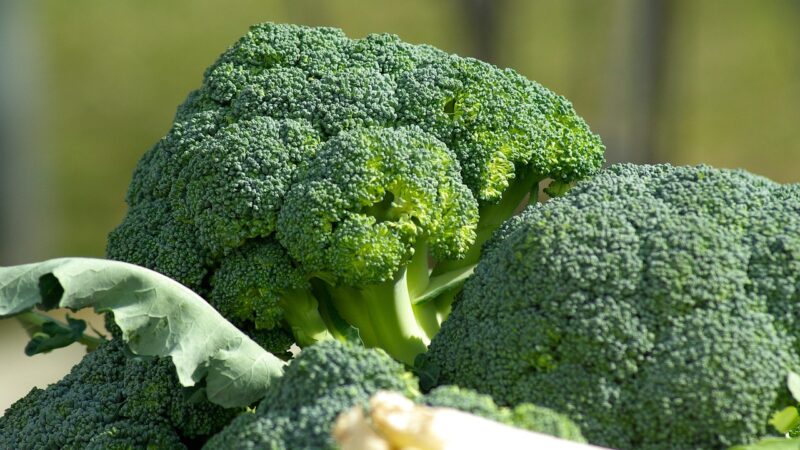The planting and propagation of broccoli

Successfully launching a broccoli crop begins with a foundational understanding of its propagation and planting requirements. This cool-season vegetable can be established in the garden through two primary methods: starting seeds indoors for a later transplant or sowing seeds directly into the garden bed. The choice between these methods often depends on the local climate, the desired harvest time, and the gardener’s preference for control over the early stages of plant life. Regardless of the chosen path, meticulous attention to timing, spacing, and technique is paramount to ensure that young plants establish themselves quickly and grow into vigorous, productive specimens.
Starting broccoli seeds indoors is a widely favored technique, particularly in regions with short growing seasons or unpredictable spring weather. This method allows you to give the plants a significant head start, ensuring they are a robust size and better equipped to handle outdoor conditions when they are eventually transplanted. It grants the cultivator precise control over temperature, moisture, and light during the most vulnerable germination and seedling phase. This controlled environment minimizes risks from pests, diseases, and adverse weather, ultimately leading to stronger, more uniform plants ready for the garden.
Direct sowing, on the other hand, involves planting the broccoli seeds straight into their final growing position in the garden. This method is simpler and requires less equipment, but it also relinquishes some control to the whims of nature. Success with direct sowing is highly dependent on timing the planting to coincide with optimal soil temperatures and weather conditions. The soil must be warm enough for germination but cool enough to support the growth of this cool-weather crop, a balance that can be tricky to achieve in some climates.
Whether you start seeds indoors or sow them directly, the principles of proper planting and transplanting remain critical to the plant’s future success. Providing the correct spacing between plants is essential to allow for adequate air circulation and access to sunlight, which helps prevent disease and ensures each plant has the resources to develop a large head. Careful handling during transplanting is also crucial to minimize root disturbance and prevent transplant shock, a period of stunted growth that can delay maturity and reduce the overall yield of the crop.
Starting seeds indoors
Initiating the broccoli growing process by starting seeds indoors is a strategic move that offers numerous advantages, especially for gardeners aiming for an early spring or a reliable fall harvest. Typically, seeds should be sown in individual pots or seedling trays approximately six to eight weeks before the last expected spring frost date. This timing ensures that the seedlings will be at the ideal stage of development for transplanting into the garden as soon as the weather conditions become favorable. Using a high-quality, sterile seed-starting mix is essential to prevent damping-off disease, a common fungal issue that can be fatal to young seedlings.
More articles on this topic
When sowing the seeds, plant them about a quarter to a half-inch deep in the pre-moistened seed-starting mix. It is good practice to plant two seeds per pot or cell and then thin out the weaker seedling after they have germinated, ensuring that only the most vigorous plant remains. After sowing, cover the trays with a plastic dome or clear plastic wrap to maintain high humidity, which aids in germination. Place the trays in a warm location, as broccoli seeds germinate best at soil temperatures between 21 and 27 degrees Celsius.
Once the seeds have germinated, which usually takes between four to seven days, the seedlings require abundant light to grow strong and stocky. Insufficient light will cause them to become tall, spindly, and weak, a condition known as etiolation. A south-facing windowsill may provide enough light, but for best results, place the seedlings under a fluorescent grow light or a full-spectrum LED light. The lights should be positioned just a few inches above the tops of the seedlings and kept on for 14 to 16 hours per day.
As the seedlings grow, it is important to maintain consistent moisture in the growing medium, watering from the bottom to encourage deep root growth and keep the leaves dry. Once the seedlings have developed two sets of true leaves, you can begin to fertilize them with a half-strength, balanced liquid fertilizer on a weekly basis. This provides the young plants with the necessary nutrients to develop a robust root system and healthy foliage in preparation for their eventual move into the outdoor garden environment.
Direct sowing in the garden
Direct sowing broccoli seeds into the garden is a straightforward method that can be very successful when timed correctly. For a summer or fall harvest, seeds can be planted directly into the garden bed in late spring or mid-summer, depending on your climate zone. The key is to ensure the soil temperature is suitable for germination, ideally above 10 degrees Celsius. Planting directly eliminates the risk of transplant shock and allows the plants to establish their root systems without disturbance from the very beginning of their life cycle.
More articles on this topic
Before sowing the seeds, the garden bed must be thoroughly prepared. This involves clearing the area of all weeds and debris, and amending the soil with a generous amount of compost or other rich organic matter to improve its fertility and structure. The soil should be worked to a fine tilth to ensure good seed-to-soil contact, which is essential for successful germination. Rake the surface level before creating shallow furrows or drills where the seeds will be planted.
Sow the broccoli seeds approximately half an inch deep, spacing them about three to four inches apart within the row. Planting them slightly closer together than their final recommended spacing allows you to select the strongest seedlings later on. After sowing the seeds, cover them lightly with fine soil and gently firm it down to ensure good contact. Water the area thoroughly but gently, using a fine spray to avoid dislodging the newly planted seeds.
It is crucial to keep the soil consistently moist until the seedlings emerge, which can take up to a week or more depending on the soil temperature. Once the seedlings have grown to be a few inches tall and have developed their first set of true leaves, they must be thinned to their final spacing. For broccoli, this is typically 18 to 24 inches apart. Choose the healthiest, most vigorous seedlings to leave in place and remove the others, either by carefully pulling them out or by snipping them at the soil level to avoid disturbing the roots of the remaining plants.
Transplanting seedlings
The process of transplanting your indoor-grown broccoli seedlings into the garden is a critical transition that must be managed carefully to avoid stressing the young plants. Before they can be moved to their permanent home, seedlings must go through a process called hardening off. This involves gradually exposing them to the outdoor conditions of sunlight, wind, and fluctuating temperatures over a period of seven to ten days. Start by placing the seedlings in a sheltered, shady spot for just an hour or two on the first day, and slowly increase the duration and intensity of their outdoor exposure each subsequent day.
The ideal time to transplant is on a calm, overcast day or during the late afternoon to minimize the stress caused by direct sun and heat on the newly moved plants. The seedlings are ready for transplanting when they are about four to six inches tall and have developed at least two to three sets of true leaves. Water the seedlings thoroughly about an hour before you plan to transplant them; this ensures the root ball is well-hydrated and holds together during the move, which helps to reduce root disturbance.
When you are ready to plant, dig holes in your prepared garden bed that are slightly larger and deeper than the pots the seedlings are in. The holes should be spaced 18 to 24 inches apart, with rows spaced about 30 to 36 inches apart to give the mature plants plenty of room to grow. You can add a small amount of balanced, all-purpose fertilizer or a scoop of compost to the bottom of each hole to give the transplants a nutrient boost right from the start.
Carefully remove each seedling from its container, making every effort to keep the root ball intact. Place the seedling into the prepared hole, setting it slightly deeper than it was growing in its pot—up to the level of its first true leaves. This encourages a stronger, more stable root system. Gently fill the hole with soil, firming it down around the base of the plant to eliminate any large air pockets. Immediately after planting, water each transplant thoroughly to settle the soil and provide essential moisture to the roots.
Spacing and depth considerations
Proper spacing is a fundamental aspect of planting broccoli that directly impacts the health of the plants and the size of the heads they produce. Overcrowding is a common mistake that leads to intense competition for light, water, and soil nutrients, resulting in stunted plants and smaller yields. For optimal growth, individual broccoli plants should be spaced approximately 18 to 24 inches apart from one another in all directions. This generous spacing ensures that as the plants mature and their large leaves spread out, they will not be shading each other excessively.
The distance between rows is equally important for both plant health and garden maintenance. Spacing your rows about 30 to 36 inches apart provides ample room for the plants to reach their full size without becoming entangled. This wide spacing also creates pathways that allow you to easily walk between the rows to weed, fertilize, monitor for pests, and harvest the crop without compacting the soil around the plant roots or damaging the foliage. Good air circulation, facilitated by proper spacing, is also one of your best defenses against the development and spread of fungal diseases.
The depth at which you plant your broccoli, whether as seeds or transplants, is another critical factor. When direct sowing, seeds should be planted no more than half an inch deep. Planting them too deep can exhaust the seed’s energy reserves before the seedling has a chance to reach the surface and begin photosynthesizing. A shallow planting depth ensures a quick emergence, giving the young plant a strong start in its life cycle.
For transplants, the rule for planting depth is slightly different and offers an opportunity to build a stronger plant. Broccoli seedlings can be planted slightly deeper than they were growing in their original containers, burying the stem up to the base of the first set of true leaves. This technique encourages the buried portion of the stem to develop additional roots, known as adventitious roots. This creates a more extensive and robust root system, which improves the plant’s stability and its ability to absorb water and nutrients from the soil.

















